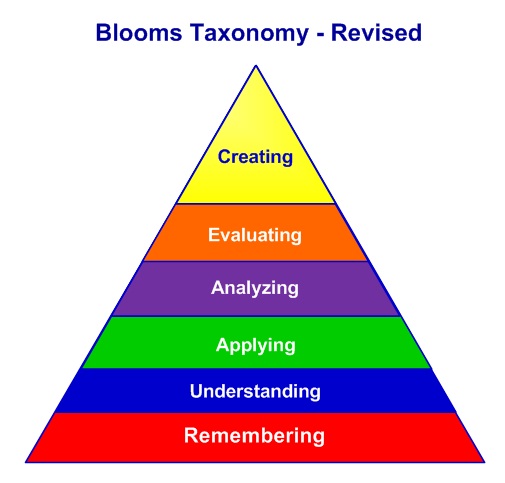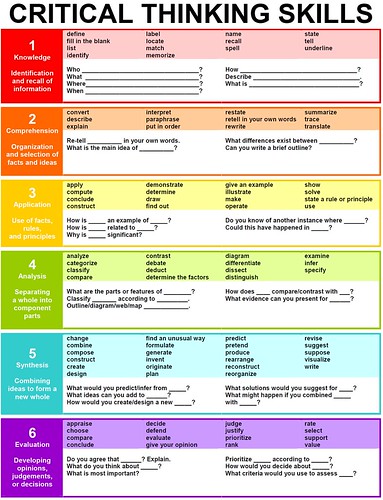Higher Order Thinking Skills According To Bloom S Taxonomy

Just like the original taxonomy the revised version provides a valuable framework for teachers trainers and instructional designers to use to focus on higher order thinking.
Higher order thinking skills according to bloom s taxonomy. Bloom s taxonomy of learning domains. Bloom s taxonomy is named after benjamin bloom a psychologist who in 1956 developed the classification of questioning according to six levels of higher level thinking. Bloom s taxonomy bloom s taxonomy provides an important framework for teachers to use to focus on higher order thinking. When teaching material to students the higher levels of learning on the hierarchy which lead to critical thinking are not utilized until the lower levels are achieved.
By providing a hierarchy of thinking both version can help in developing performance tasks creating questions or constructing problems. In other words teachers use this framework to focus on higher order thinking skills. Before you set out to write your course outcomes and objectives it is very helpful to understand bloom s taxonomy and higher order thinking. Benjamin bloom 1913 1999 is an educational psychologist who led the effort in developing a taxonomy that served as a framework for classifying learning objectives i e what we expect students to learn as a result of instruction.
These types of questions only require children to use memorization in order to respond. In bloom s taxonomy there are six levels of skills ranked in order from the most basic to the most complex. Bloom s taxonomy was created in 1956 under the leadership of educational psychologist dr benjamin bloom in order to promote higher forms of thinking in education such as analyzing and evaluating concepts processes procedures and principles rather than just remembering facts rote learning it is most often used when designing educational training. Bloom s taxonomy was revised in 2001.
Bloom s taxonomy is a framework that starts with these two levels of thinking as important bases for pushing our brains to five other higher order levels of thinking helping us move beyond remembering and recalling information and move deeper into application analysis synthesis evaluation and creation the levels of thinking that your professors have in mind when they are designing. Higher order thinking known as higher order thinking skills hots is a concept of education reform based on learning taxonomies such as bloom s taxonomy the idea is that some types of learning require more cognitive processing than others but also have more generalized benefits. By providing a hierarchy of levels this taxonomy can assist teachers in designing performance tasks crafting questions for conferring with students and providing feedback on student work. As a teacher you should ensure that the questions you ask both in class and on written assignments and tests are pulled from all levels of the taxonomy pyramid.
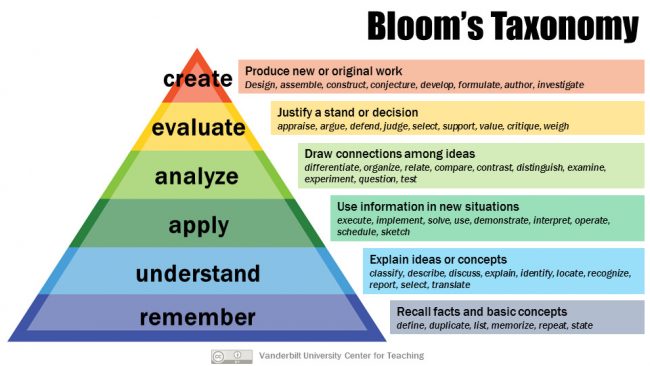



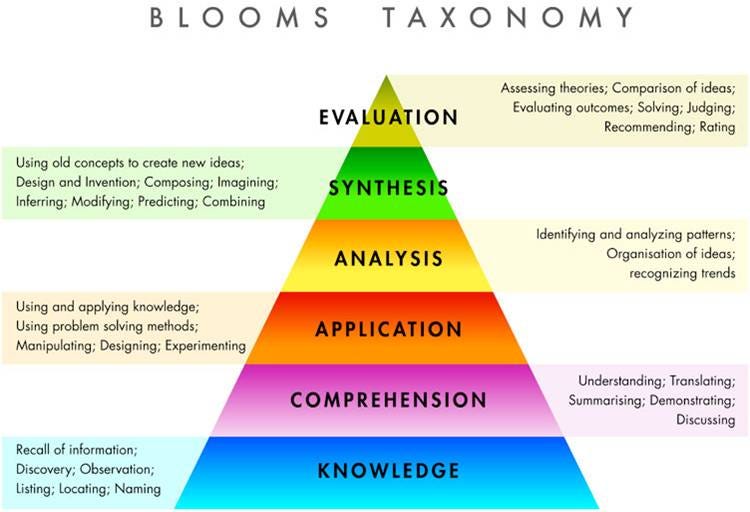

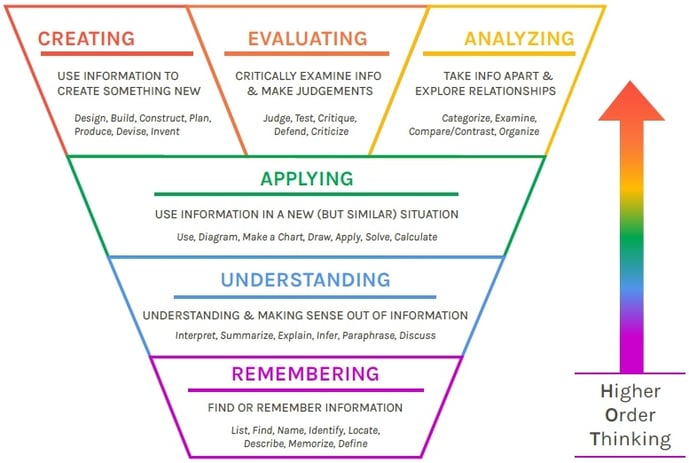

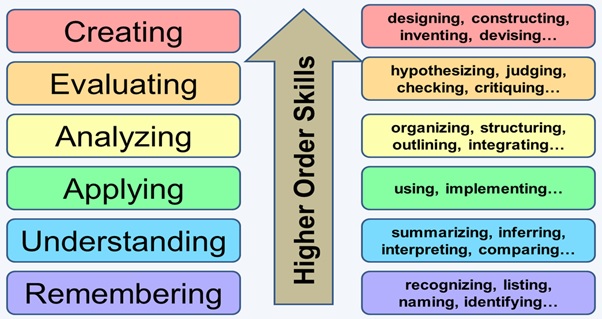

:max_bytes(150000):strip_icc()/Blooms-Graphic-1024x757-00772b45d3974746afa6aa8a34db64e6.jpg)



